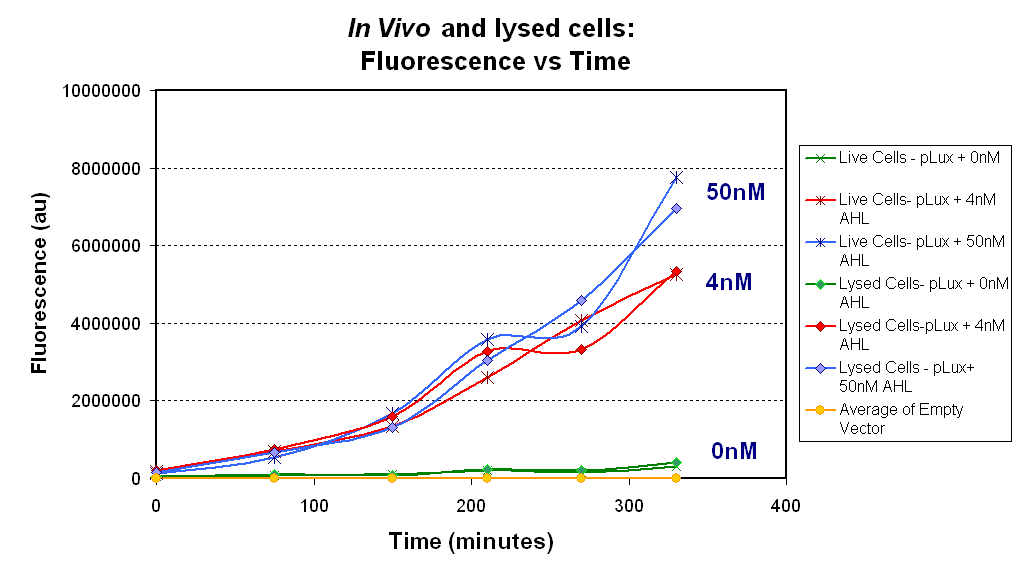Imperial/Wet Lab/Results/ID1.1
From 2007.igem.org

In vivo Testing of pTet-LuxR-pLux-GFPmut3b Construct
Aims
To determine if the of pTet-LuxR-pLux-GFPmut3b construct works in vivo.
Materials and Methods
See Protocols page
Results
Controls:
- Negative Control- E.coli BL21 containing an empty vector from the registry
Constants:
- Temperature - Cells grown at 37°C
- Volume of Cells sampled - 500µl
- Volume Measured - 60ul of PBS buffer
Raw Data
Discussion
Figure 1.1 shows that the construct pTet-LuxR-pLux-GFPmut3b works in vivo. The results show that with increasing [AHL] the fluorescence increases, therefore the GFPmut3b produced is increasing with increasing [AHL]. The negative control increases slightly, however remains very low in comparison to the samples.
The difference between the lysed and whole cells does not have a clear pattern, for some samples the lysed cells are higher and in other samples it is lower. This variability is likely to be due to the experimental method, because the lysed and the whole cells where different samples and so error could have been introduced.
The O.D.600 shows that the growth of the cells containing the empty vector and pTet-LuxR-pLux-GFPmut3b were in the exponential growth phase that appeared to be moving into the steady state phase at the end of the experiment. There is no clear difference between the empty vector or the vector containing pTet-LuxR-pLux-GFPmut3b, this means that the pTet-LuxR-pLux-GFPmut3b appears to have very little metabolic burden on the cells.
Conclusion
The pTet-LuxR-pLux-GFPmut3b is working in vivo and GFPmut3b produced increases with increasing [AHL].

